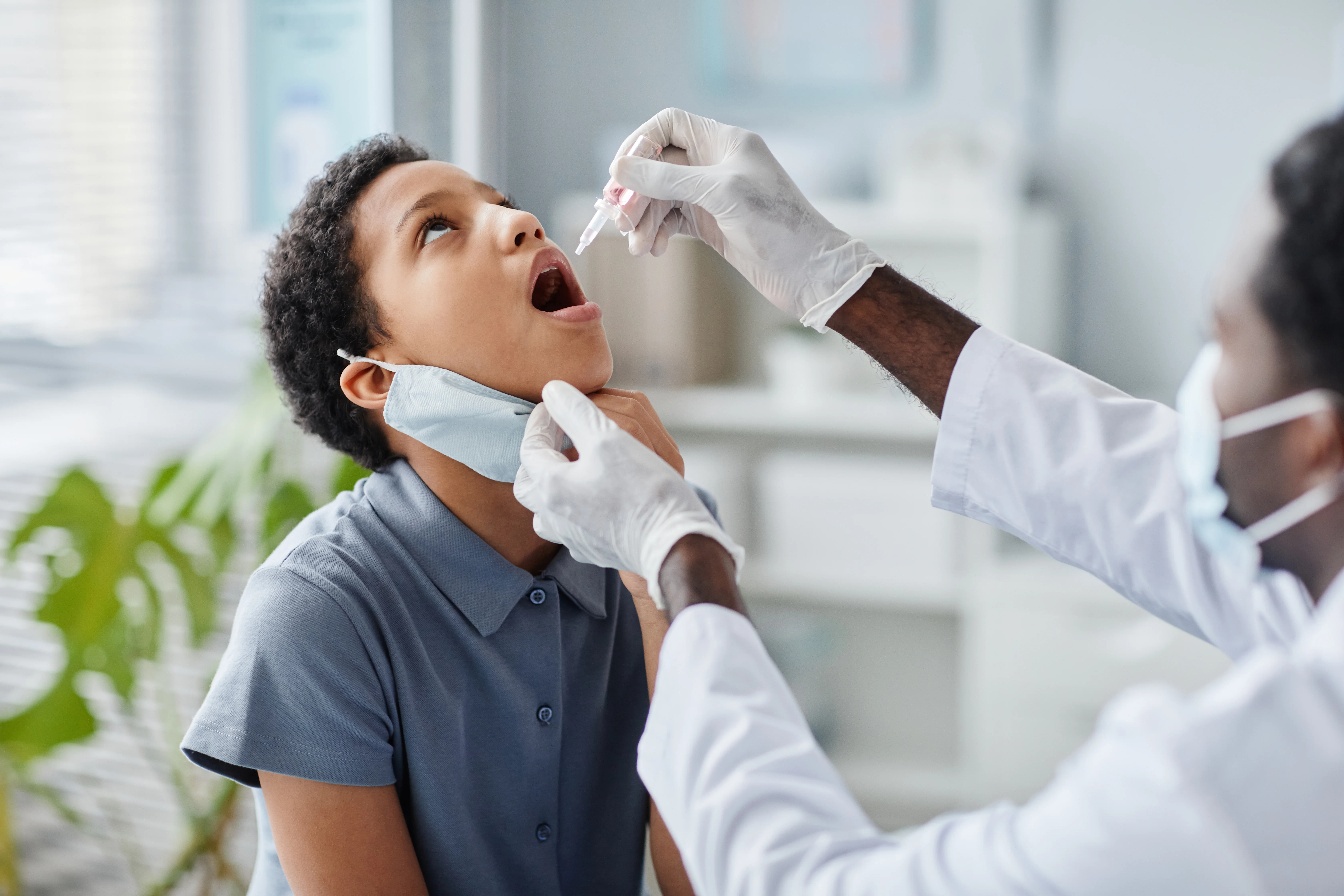Understanding Anaphylaxis: A Guide to its Four Stages

Why Understanding Anaphylaxis Is Crucial
Anaphylaxis is more than just a bad allergic reaction—it’s a medical emergency that can happen suddenly and escalate fast. Knowing how to recognize it, especially in children, can literally save lives. Whether it’s triggered by peanuts, shellfish, medications, or insect stings, acting quickly is essential.
For families managing food allergies, understanding the four stages of anaphylaxis helps you stay ahead of danger. It’s not always as obvious as swelling or hives—early signs can be subtle and easily missed.
At Empower Allergy Treatment, we’ve seen firsthand how important education and early detection are. In this blog, we’ll walk you through each stage of anaphylaxis, how to treat it, and when to act. This guide is designed for parents, caregivers, and anyone living with or supporting someone with allergies.
Let’s break down the stages of anaphylaxis, explain what’s happening in the body, and give you the tools to feel more prepared and protected.
What Is Anaphylaxis? A Quick Overview
Anaphylaxis is a severe allergic reaction that can affect multiple systems in the body, including the respiratory, cardiovascular, and digestive systems. It’s triggered when the immune system overreacts to an allergen—something that’s normally harmless, like peanuts, shellfish, eggs, latex, or certain medications.
This reaction is fast and dangerous. It can begin within minutes of exposure and, without immediate treatment, may lead to anaphylactic shock, unconsciousness, or even death. The good news? With awareness and the right tools—like an epinephrine auto-injector—anaphylaxis can be managed safely.
Some common triggers we see at Empower include food allergens, insect venom, and medications. If your child or loved one has ever had even a mild allergic reaction, it’s important to work with an allergy specialist to assess their risk.
Our approach combines accurate diagnostics like Skin Prick Testing and Oral Food Challenge with education and long-term treatment strategies to reduce risk and build confidence.
You can learn more about how we help families stay safe by exploring our full range of Services and Programs.
The 4 Stages of Anaphylaxis
Stage 1: Early Symptoms – The Warning Signs
The first signs of anaphylaxis can be easy to miss—especially in children or first-time reactions. These symptoms may look like a typical allergic reaction but are often the calm before the storm.
Watch for:
- Itchy skin or hives (usually the first sign)
- Flushed or pale skin
- Swelling of lips, tongue, or eyelids
- Runny nose, sneezing, or watery eyes
- A feeling of anxiety or “something’s not right”
These early symptoms often appear within 5–30 minutes of exposure to an allergen. Children may not be able to describe how they feel, so parents should be especially alert for changes in mood, sudden fatigue, or clinginess.
The earlier you recognize these signs, the better your chances of stopping the reaction from progressing. At this point, you may not need to use an epinephrine auto-injector, but you should have it ready and monitor symptoms closely.
If you’re unsure whether it’s a mild allergy or the beginning of something more serious, don’t wait—early action saves lives.
Stage 2: Progressing Symptoms – Respiratory and GI Involvement
In Stage 2, symptoms become more severe and start affecting multiple systems—especially the airways and gastrointestinal tract. This is when it becomes clear that the reaction is escalating into full-blown anaphylaxis.
Watch for:
- Tightness in the throat
- Hoarseness or difficulty speaking
- Wheezing or coughing
- Shortness of breath
- Stomach pain, nausea, vomiting, or diarrhea
At this point, breathing may be compromised. Children often say it feels like “something is stuck” in their throat. GI symptoms may be mistaken for a stomach bug or anxiety, but when paired with other symptoms, they’re a strong sign of anaphylaxis.
This is the stage where epinephrine should be administered immediately. Antihistamines won’t stop anaphylaxis—they only help with skin-related symptoms. Only epinephrine can reverse the reaction and stabilize vital signs.
If you're reading this because your child has had similar symptoms before, now is the time to talk to a specialist about an Avoidance Planning strategy that goes beyond simply “avoiding the allergen.”
Stage 3: Full-Blown Anaphylaxis – Emergency Phase
In this phase, the body enters a systemic emergency, known as anaphylactic shock. Without treatment, this stage can quickly become life-threatening.
Signs of full-blown anaphylaxis include:
- Difficulty breathing or gasping for air
- Rapid heartbeat or a weak pulse
- Drop in blood pressure
- Dizziness or fainting
- Confusion, panic, or unresponsiveness
- Bluish lips or pale skin
Administer epinephrine immediately and call 911. Do not wait to see if symptoms improve. Lay the person flat on their back and elevate the legs unless they’re vomiting or having trouble breathing—then keep them in a position that’s comfortable and open for air.
Even if the person seems to improve after epinephrine, they must be monitored in a medical setting. Reactions can return (see Stage 4), and additional treatment may be required, including oxygen, fluids, or antihistamines.
Many of our patients who experience repeated or high-risk reactions benefit from Xolair (omalizumab), a prescription medication that can reduce the body’s allergic response over time.
Stage 4: Biphasic Anaphylaxis – When Symptoms Return
An often-overlooked stage of anaphylaxis is the biphasic reaction—when symptoms come back hours after the initial episode has passed. This can happen anywhere from 2 to 72 hours later, even if the person received treatment and initially recovered.
Symptoms may include:
- Return of hives or swelling
- Coughing or difficulty breathing
- Reappearance of stomach pain or dizziness
- A second drop in blood pressure
That’s why it’s essential to observe patients in the ER for at least 4–6 hours after treatment. In some cases, hospitalization is necessary, especially if the initial reaction was severe.
Patients who’ve experienced a biphasic response should have a more detailed allergy action plan, and be seen by a specialist to discuss long-term strategies, including oral immunotherapy, trigger identification, and emergency preparedness.
Families we work with often say that understanding this stage was a game-changer—it gave them peace of mind, even after a terrifying experience. Knowing what to expect reduces fear and empowers quick, smart decisions.
What to Do During an Anaphylactic Reaction
When in doubt, treat it like an emergency. Here's what to do if you suspect someone is experiencing anaphylaxis:
- Use the EpiPen immediately. Don’t wait for all symptoms to appear.
- Call 911. Always seek emergency care, even if symptoms improve.
- Lay the person down and elevate their legs.
- Keep airways clear and loosen tight clothing.
- Use a second EpiPen if symptoms don’t improve after 5–15 minutes.
Timing is everything. Epinephrine auto-injectors are safe and effective—and far better than waiting to see if the reaction gets worse. Always have two injectors on hand, and make sure caregivers, teachers, and family members know how to use them.
Need help creating an action plan or training your support network? That’s exactly what we help families with at Empower Allergy Treatment.
How Empower Allergy Treatment Can Help You
At Empower Allergy Treatment, we go beyond diagnosis. We focus on helping families build confidence and resilience when managing severe allergies.
Our personalized approach includes:
- Accurate diagnostics
- Long-term support and education
- Cutting-edge treatment options
- Emergency preparedness plans
- Support for schools, daycares, and caregivers
Visit our About Us page to meet the team and learn why families across San Diego trust Empower for allergy diagnosis, education, and long-term care.
Be Prepared, Stay Informed
Anaphylaxis is serious, but it doesn’t have to control your life. By recognizing the four stages of anaphylaxis, taking early action, and having the right tools on hand, you can protect your loved ones and respond with confidence.
Remember: If you're ever unsure whether a reaction is serious—use the EpiPen and seek emergency care. It’s always better to overreact than underreact.
If you're looking to create a solid emergency plan, explore treatment options like Xolair, or simply get more clarity around your family’s allergy risk, we're here for you.
Contact Empower Allergy Treatment today to schedule a consultation—and take the next step toward clarity, safety, and peace of mind.
Discover the Personalized Allergy Care Your Child Deserves
Find lasting food allergy relief for your child in San Diego. Schedule a consultation today to begin the journey to better health.

Frequently Asked Questions
Find answers to common questions about allergy care and treatments.
Food allergies occur when the immune system mistakenly reacts to proteins in certain foods. These reactions can range from mild symptoms like hives to severe conditions like anaphylaxis. Treatment involves avoiding allergenic foods, using medications to manage reactions, and in some cases, oral immunotherapy to desensitize the immune system. An allergist can help develop a personalized treatment plan for your child. Learn more about our services here.
If your child shows symptoms like hives, stomach issues, or difficulty breathing after eating, you should consult an allergist. Early diagnosis can prevent severe reactions and guide treatment. If you’re unsure whether a food allergy is causing symptoms, an allergist can provide clarity through testing. It's also important if there’s a family history of food allergies.
If your child experiences symptoms like swelling, stomach pain, or breathing issues after eating certain foods, testing can help identify the cause. Testing is also recommended if there’s a family history of allergies or if you're unsure about which foods might be triggers. An allergist can assess whether food allergy testing is necessary based on symptoms and medical history. Contact us today to schedule your consultation.
Yes, food allergies can be managed and, in some cases, treated. Treatments like oral immunotherapy (OIT) can gradually desensitize the immune system to food allergens, reducing the risk of severe reactions. At Empower Allergy Treatment, we offer cutting-edge food allergy treatments, including desensitization programs tailored to your specific needs. Discover more about our food allergy treatments here.
Begin Your Journey to Empowered Food Allergy Management
Schedule a consultation for your child’s food allergy needs and discover personalized treatment solutions.




